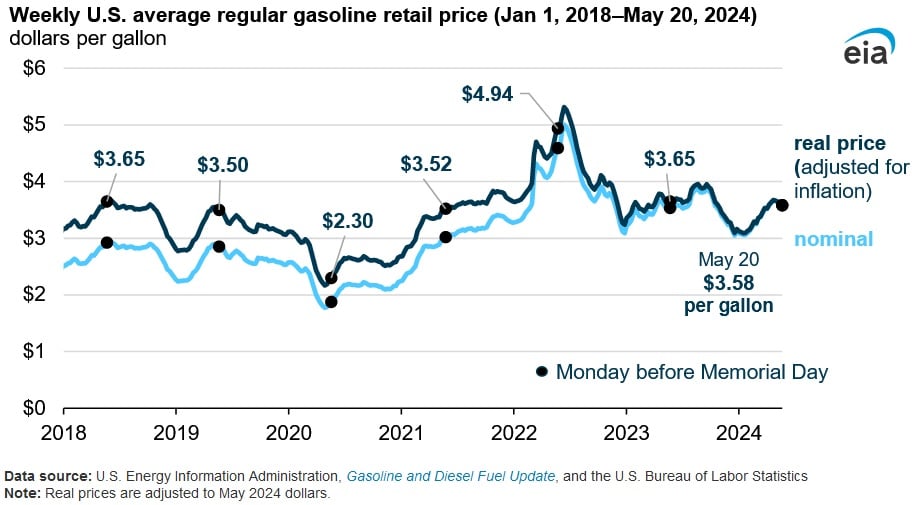U.S. Gasoline Prices Higher Year-on-Year: EIA

The retail price of regular U.S. gasoline averaged $3.58 per gallon(gal) as of the Monday before Memorial Day, according to a May 23 report published by the U.S. Energy Information Administration. The retail price of U.S. gasoline is one percent higher compared to the same period last year. The price increase can be attributed to higher crude oil prices, a seasonality trend where consumers shift to more expensive summer grade gasoline, unexpected refinery shutdowns and annual maintenance taking place earlier than expected. Travel by car over the Memorial Day weekend is expected to increase by four percent to 38.4 million people this year in comparison to last year, according to the American Automobile Association.
Crude oil is a significant driver of retail gasoline price and as of March 2024, accounted for 56 percent of the cost to produce a gallon of gasoline. Brent crude oil prices have risen and traded with volatility amid geopolitical tensions in both the Middle East and between Russia and Ukraine.
Brent crude oil prices rose by around 20 percent from $76 per barrel on Jan. 2 to $91 per barrel on April 5. Brent crude prices have largely been driven by Houthi attacks on ships passing through the Red Sea and military activities and tensions between Iran and Israel. Moreover, voluntary production cuts by OPEC+ members have led to lower global oil stocks and provided Brent crude markets with underlying price support.
Over the last five weeks, easing tensions in the Middle East and increasing refinery output has led to a two percent decline in average retail gasoline prices. U.S. gasoline prices usually differ according to regionality, mirroring local supply and demand fundamentals, state fuel stipulations and state taxes.
Retail gasoline prices are generally highest in the West Coast, as a result of tight demand and supply fundamentals, the region’s inadequate interconnections with other major refining centers, elevated state taxes and gasoline specification in California making gasoline more expensive to produce. Gasoline prices are lowest usually in the Gulf Coast, due to more than 50 percent of U.S. refining capacity being produced in this region and demand being lower than production.
EnerKnol Pulses like this one are powered by the EnerKnol Platform—the first comprehensive database for real-time energy policy tracking. Sign up for a free trial below for access to key regulatory data and deep industry insights across the energy spectrum.
ACCESS FREE TRIAL